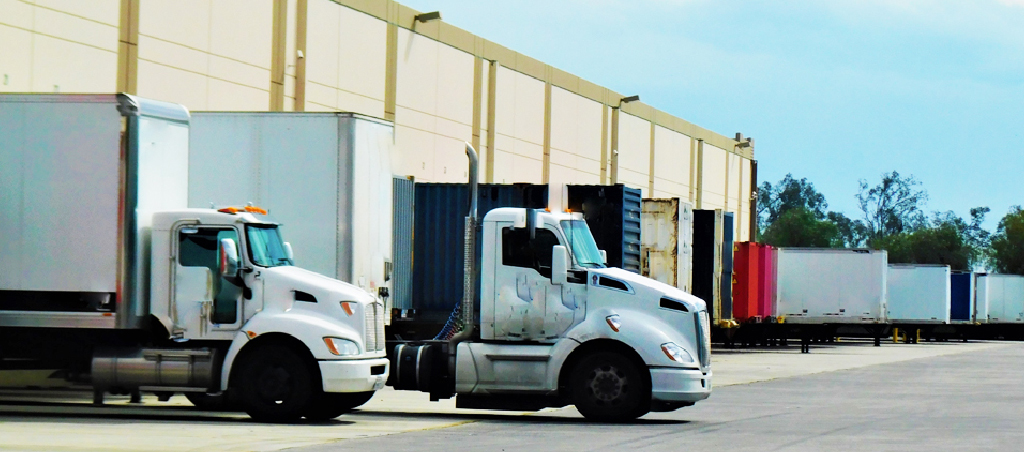
How ELDs are Improving the Supply Chain for Trucking Drivers
Importance of logistics and transportation
Freight haulage on trucks is central to the economy of Canada and spurt in online buying is having far-reaching impact on the operations of trucking companies. According to American Transportation Research Institute, rise of e-commerce is shortening the average length of the long haul, while increasing the average length of “last mile” trucking. Earlier it were only the regulatory compliance and transport technology that impacted the health of the trucking industry; these days Internet and Internet-enabled retail are creating major disruptions in the industry and making us think, beyond today, into the logistics of future.
We also can’t discount the importance of outbound and inbound logistics in e-commerce since transportation is a big “cost head” in online retail. Speed, reliability, and flexibility of the logistics service provider also play a crucial role in the success of an e-business. So, we find that e-commerce and trucking share a symbiotic relationship with each other.
Transportation and e-commerce
Canada has a massive transportation system of more than 1400000 Kilometers, which contributes significantly to the country’s GDP. Trucking generates 35% of the total GDP that accrues from all kinds of transport business. Canadian e-commerce is estimated to be about $34 Billion and constitutes about 6.4% of the total sales of all kinds.
Like other verticals, role of logistics industry too is indispensable to the national and international economy but unlike others, trucking is very volatile and price sensitive and it has to constantly innovate to stay profitable.
Sales and retail
Powered by booming businesses that require bulk movement of goods, the logistics industry has been on an upward spiral since 1990s. And without doubt, rise of e-commerce too has added to its success. Market observers have noted a 3000% increase in e-commerce sales from 1997 to 2017.
The retail disruption and the “last mile”
Transportation in traditional retail requires low frequency of large shipments contrary to the high frequency of small parcels in online retail. So momentum is building to change tacks, “restrategize” and bring operational changes in the logistics and transportation. Focus is increasingly veering around the “last mile”, which is the distance a product travels from the warehouse or store to the end customer. Among other things that are required to tackle the “downsizing of the packet” are warehouse automation and better packaging for timely and damage-free delivery. Contemporary times are also seeing development of “omni-channel marketing” in which retailers are creating flexible models and are getting products closer to the consumer by decentralizing distribution. Besides, the number of drivers, e-commerce is also seeking reworking on vehicle’s capacity and vehicle demand. Increase in “last mile” logistics also is increasing demand of smaller truck units. And add to that the customers’ insistence on same day or next day delivery, the final pressure comes on logistics industry. Therefore, motor and equipment manufacturers are focusing on innovation and exploring things like robots, drones, smart compartmentalization and automatic delivery vans to better the supply chain in the “last mile”.
Besides, the number of drivers, e-commerce is also seeking reworking on vehicle’s capacity and vehicle demand. Online retail giant Amazon announced in September last year that it would pick 20,000 Mercedez-Benz Sprinters from the Charleston (US) facility of the company. The move is seen as the online retailing giant to move its logistics distribution in house away from UPS and FedEx, its trustworthy partners in the phenomenal success. The logic of this move is driven more by efficiency than rivalry. Transporters too are forced to focus on the “last mile” and operators, who can position themselves here today, have a lot to gain.
Drivers and the “last mile”
Shortening the hauls can also bring the operational area of truckers’ closer home and, thus, check the attrition rates of drivers in companies. However, some industry professionals also believe that it would further exacerbate the shortage of long haul drivers as many of their cadres would be attracted to work in the “last mile” jobs spurred by e-retail. Yet the jury is out on whether in times to come trucking would need more or fewer drivers. Also not all is gung ho about the “last mile” for the online retailer. We see that in traditional sales the consumer pays for the trip by travelling the distance to and fro from the home to store to make a purchase. In online retail, this cost is shared by the retailer and the shipper.
Shorter “last mile” trips give training to drivers for making long haul trips later. Those in the age group of 18 and 21 can increase their driving skills on local and intra-province deliveries and can later, after arriving at the age of 21, become long haul drivers. Drivers moving local freight also get some leniency in Hour of Service (HoS) regulations.
Conclusion
At the ground level, trucking companies are coming to grips with changes ushered by e-commerce and are still trying to configure its full implications. The changes are occurring in human resources to the size of trucks needed in handling the online retail push. In times to come a better fit will arise between logistics service providers, drivers and e-retailers that will lead to a win-win situation for all including the consumers.

Drive Smart with a Driver’s App
Our app matches carriers with shippers. Carriers can just tap a button and instantly book a load, and the price you see is the price you get – no more back-and-forth negotiations. Loads on our app are exclusive to us through our contracts with shippers.



